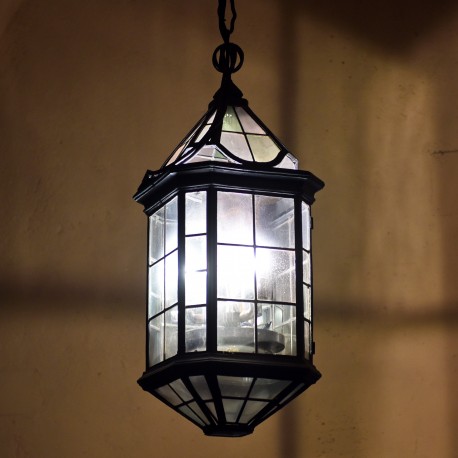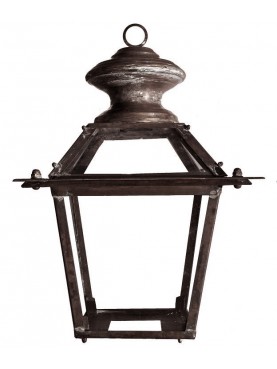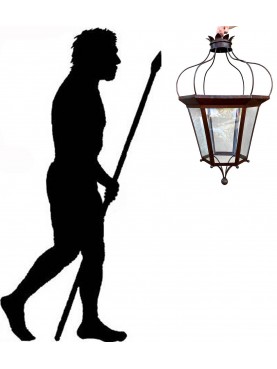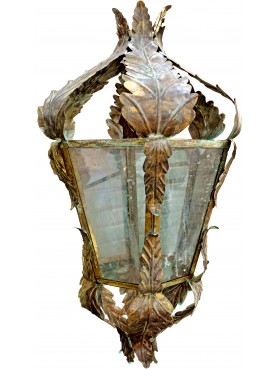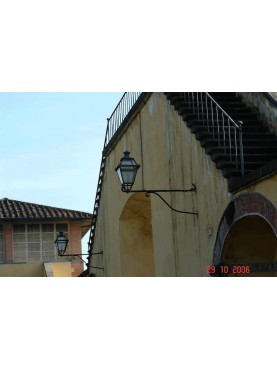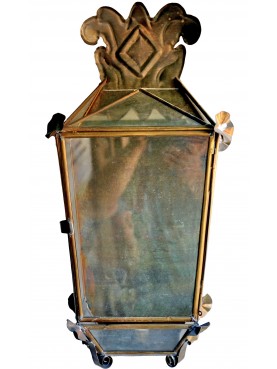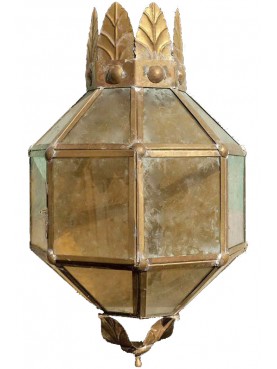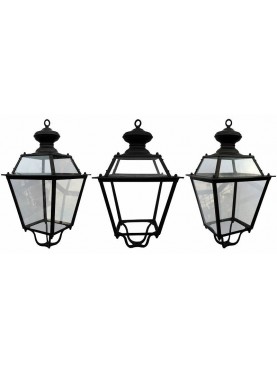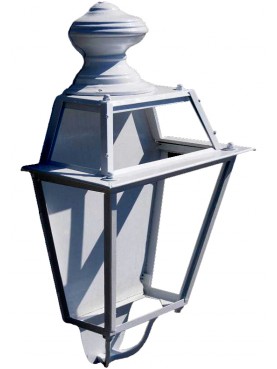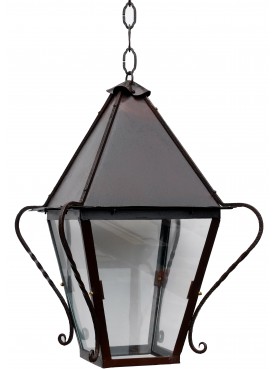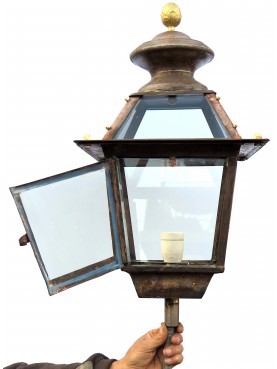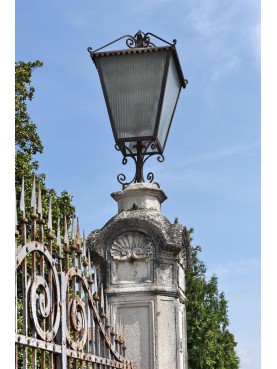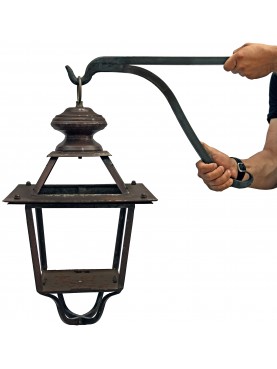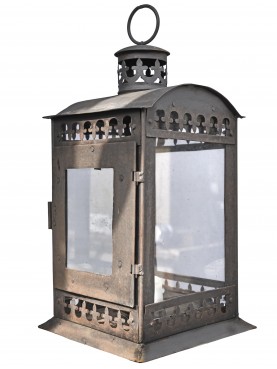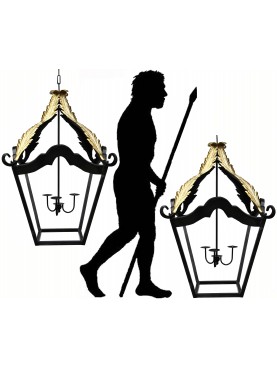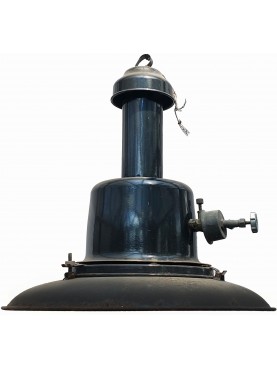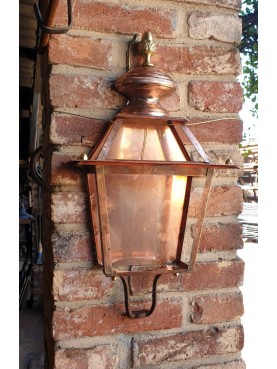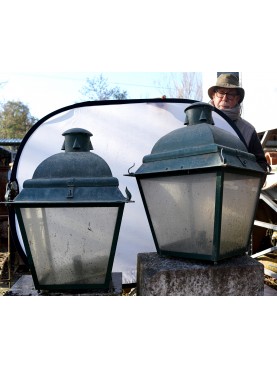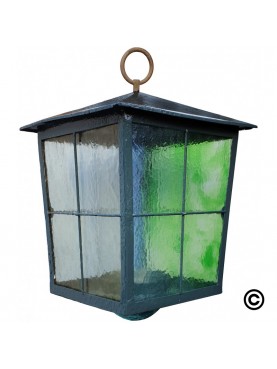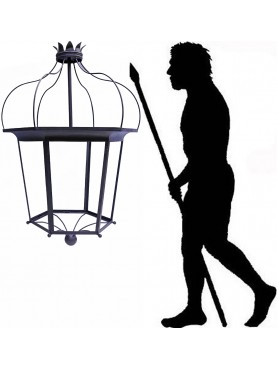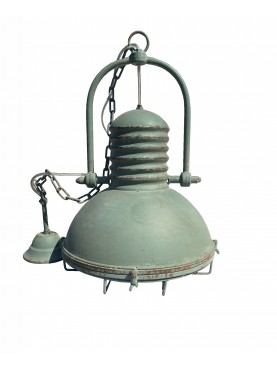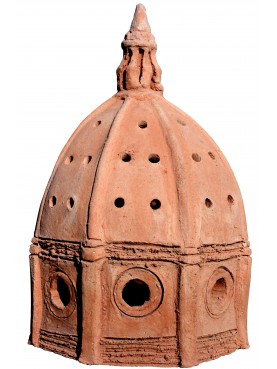Great Italian octagonal wrought-iron lantern - Palazzo Venezia in Rome
Great Italian octagonal wrought-iron lantern - Palazzo Venezia in Rome
11981
New
Handmade, our production, octagonal wrought-iron Italian lantern.
The Gardens lanterns of Palazzo Venezia in Rome.
Our exclusive production.
Complex lantern, octagonal section with not equal sides .
In total there are 88 glasses with 14 different forms.
On the head there is a small armillary sphere with 2 m of chain.
In the lantern side there is an openable door.
Data sheet
| Height | 28.35 in | 72 cm |
| Width | 19.69 in | 50 cm |
| Depth | 13.78 in | 35 cm |
| Weight | 39.68 lbs | 18 Kg |
| Finish | Fidoil | |
| Manufacturing | Recuperando srl | |
| Material | Wrought-iron | |
| Note 01 | Electrification not included |
More info
The Palazzo Venezia (formerly Palace of St. Mark) is a palazzo (palace) in central Rome, Italy, just north of the Capitoline Hill. The original structure of this great architectural complex consisted of a modest medieval house intended as the residence of the cardinals appointed to the church of San Marco. In 1469 it became a residential papal palace, having undergone a massive extension, and in 1564, Pope Pius IV, to win the sympathies of the Republic of Venice, gave the mansion to the Venetian embassy to Rome on the terms that part of the building would be kept as a residence for the cardinals, the Apartment Cibo, and that the republic would provide for the building's maintenance and future restoration. The palace faces Piazza Venezia and Via del Plebiscito. It currently houses the National Museum of the Palazzo Venezia.
It took on a new layout in 1451, when owned by Cardinal Pietro Barbo, nephew of Pope Eugenius IV and the future Pope Paul II. It was a fortified building, composed of a half-basement and a mezzanine that functioned as a piano nobile, extending over a small area between the basilica and the gate of the present palazzo overlooking the piazza, with a small external tower. It was a building of no exceptional size but was sufficiently dignified as a cardinal's residence so that, even in 1455, Pietro Barbo could proudly boast of it, having a commemorative medal struck in its honor. In 1455, the building manifested some of the first Renaissance architectural features in Rome; although the overall aspect is of a massive, defensible medieval structure with battlemented crown.
It was built around the medieval tower at the right of its facade and incorporated within its mass the ancient basilica church of San Marco founded by Pope Marcus in 336 and dedicated to the Evangelist who would become protector of Venice, completely rebuilt in 833, and which underwent frequent reconstructions since then.
Facade facing Piazza Venezia.
Much of the stone to build the palazzo was quarried from the nearby Colosseum, a common practice in Rome until the 18th century. The design is traditionally attributed to Leone Battista Alberti, the Venetian cardinal, Pietro Barbo, who later became Pope Paul II, was the patron: he continued to inhabit it even as pope.
The project was continued after his death by his nephew Marco Barbo, patriarch of Aquileia. The green courtyard had only been enclosed by a colonnade surmounted by a loggia for less than a quarter of its full ranges before work was interrupted; the fully Renaissance design was by Giuliano da Maiano.
The building became a papal residence, and in 1564 Pope Pius IV gave use of much of the building to the Republic of Venice for its embassy and for the titular cardinal of S. Marco, by tradition always a Venetian.
From the Treaty of Campoformio (1797) throughout the nineteenth century, as Austria succeeded the defunct Republic, the building was the seat for the Austrian ambassador to the Vatican. In 1916, Italy, at war with Austria-Hungary, seized the building. It was subsequently restored.
Benito Mussolini had his office in the Palazzo Venezia in the Sala del Mappamondo, and used its balcony overlooking the Piazza Venezia to deliver many of his most notable speeches, such as the declaration of the Italian Empire, 9 May 1936, to crowds gathered in the Piazza Venezia below.
The Museo di Palazzo Venezia, housed in the building, contains galleries of art, predominantly pottery, tapestry, statuary from the early Christian era up to early Renaissance.
Source: Wikipedia.

